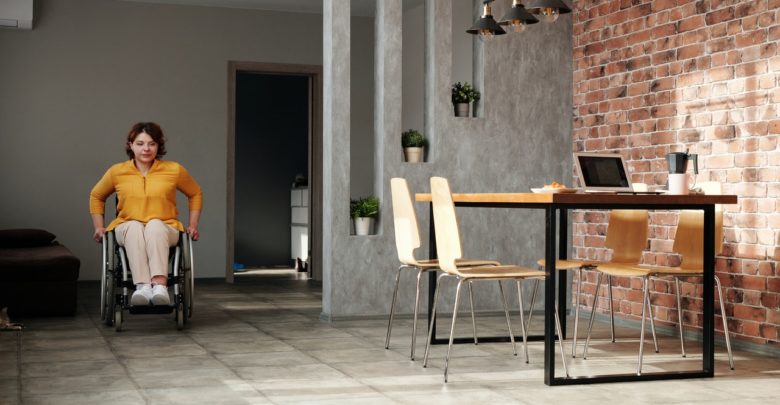How to Make Your Home More Accessible

If someone in your home is disabled, it can be difficult to access different areas of the property because of the design and features of their wheelchair or walker. Making your home more accessible can offer more convenience and functionality to ensure the individual is accommodated. If you want to boost the functionality of your home, there are a few important steps to take.
Remove Steps
Removing steps near the entryway of the building is one of the main ways to accommodate someone who is in a wheelchair or uses a walker. Create a ramp that is easy to use and doesn’t require going through another door to get into the home each time.
Widen the Doors and Hallway
It’s common for wheelchairs to get stuck in different areas of the home because of how wide most wheelchairs are as the person rolls around. Widening the doors and hallway can make the home easier to navigate without scratching or scuffing up the walls. The doorways should be at least 36 inches wide.
Replace the Flooring
The floors may not be smooth enough to roll around easily, which can limit the ability to move along as freely in the wheelchair. You can replace linolium with wood or tile. Rugs also need to be removed from different areas in the building because they’re prone to grabbing walkers and wheelchairs. Removing rugs may affect the interior design of the setting, but can prevent an accident from occurring.
Add Better Lighting
If the interior setting isn’t illuminated enough, it can affect how easy it is to get around. There may be many hazards present that aren’t visible if there’s inadequate lighting in the setting. Consider integrating voice-activated lights to ensure the handicapped individual can choose what lights they need to turn on when entering certain rooms of the home without having to reach for a light switch.
Create a Bedroom on the First Floor
It can be difficult to get around in a wheelchair or with a walker with a bedroom on the second floor because of how often you need to use the chairs. Consider creating a bedroom on the first floor for added convenience and to save time. You can also consider moving to a one-story home if you live with someone who is disabled.
Similarly, there should also be a bathroom with a bath present on the first floor to ensure the handicapped resident can use the restroom throughout the day without spending more time accessing the second floor. The bathroom should include an ADA-compliant sink to ensure someone in a wheelchair can easily wash their hands and have access to the water. The sink should be a minimum of 27 inches from the floor and eight inches from the countertop edge. The center drain also needs to be ADA-compliant when it’s properly installed.
The shower or bath in the bathroom should also include grab bars for added stability and safety while bathing. A bar with a 1 1/2-inch diameter is the most accommodating option for most people. You can also add a riser to the toilet, which accommodates adults who have difficulty bending over because of their mobility issues. Risers are affordable to buy at a home improvement store and are easy to install yourself.
Making your home more accessible offers many benefits when you live or care for someone who is handicapped. With the right modifications made, it can create a more habitable setting for the individual and enhance their quality of life to ensurethe home fits their needs and accommodates their limitations.




